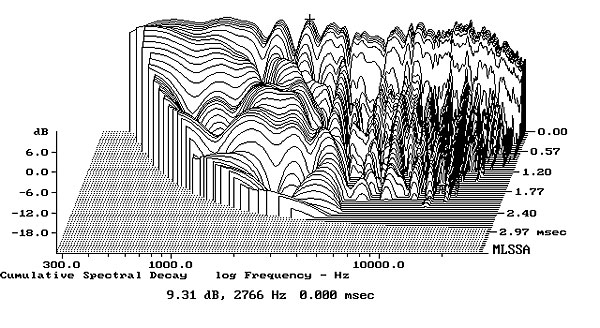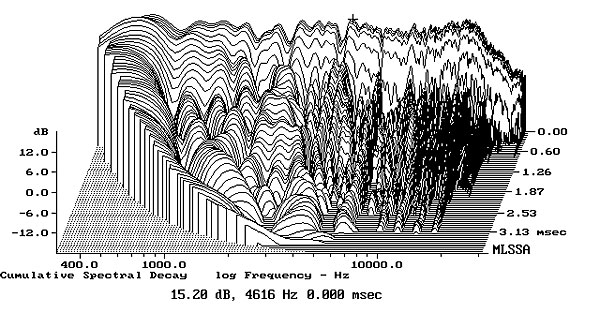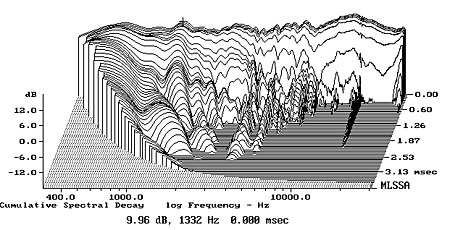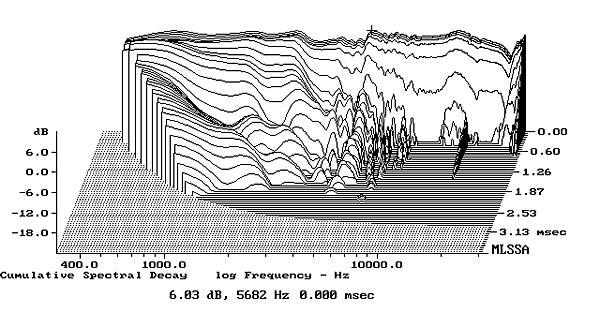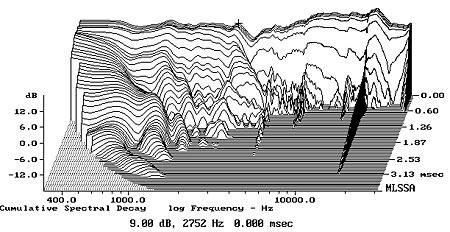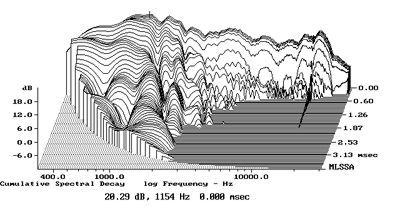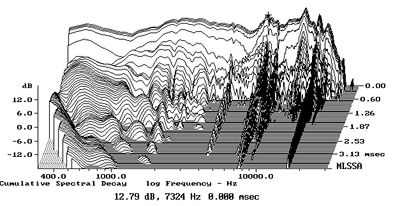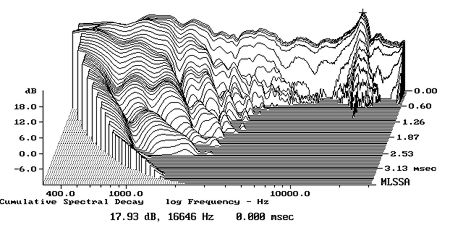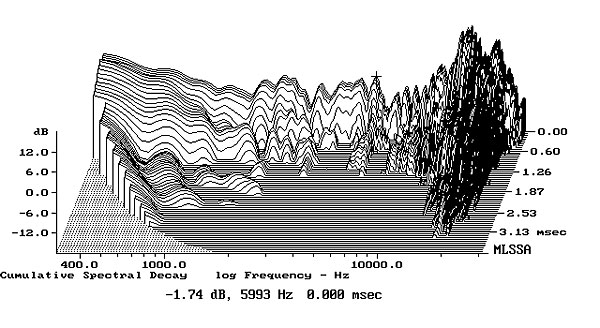1) "Roger Sanders makes the best loudspeakers in the world".
No he doesn't. Not even the best electrostat. I say that having owned 4 sets of ESL's, and having heard several more including Sanders.
2) "A S.O.T.A. speaker must use an electrostatic midrange".
The reason he provides: "The reason that electrostatic speakers are so good is that they are the only type of midrange driver that has essentially no moving mass. Magnetic speakers simply cannot match the performance of electrostatics in the midrange because they are heavy so cannot be accelerated quickly and accurately at treble frequencies"
No/Yes/Maybe F=ma Just because something is light doesn't mean you can move it faster. Depends upon the details. The modern diaphragm mylar is barely more dense than air itself. Electrostats do have typically very high quality midrange because of very low distortion which is related to something he should have mentioned. You are applying the sound over a far larger surface area. The surface SPL intensity is far lower on a esl panel. Think of a single bright spotlight and the same amount of light spread over a wide panel. Ultimately an esl might be SOTA on the midrange, but the wide panel brings its own problem of directivity being wrong.
Now the Quad ESL 63 did something smart with the delayed concentric rings driving the panel to act like a semi-point source. If a modern version of that with more sophistication and more rings were used you could have it all. A large midrange panel for low surface intensity at near the density of the air for amplifier level low distortion and directivity that could be precisely controlled. Done correctly it would have close to zero drawbacks. You also could do a long tall line source with vertical segmenting. To my knowledge no one has done this yet.
And finally will that be better than top quality midrange domes? I don't know, it might.
3) "Magnetic woofers have many problems with their enclosures that cause them to produce with a lot of overshoot and ringing that makes it impossible for them to integrate well with a massless electrostatic speaker".
Quite often yes. Things have gotten better, and I wouldn't say impossible. Some servo controlled subs have managed to work just fine. Plus, one of my main complaints about the Sanders is the woofer stuck out like a sore thumb. Not as badly as some early ML hybrids, but enough I couldn't ignore it. I've integrated active subs better than Sanders does.
4) "The solution is to use a transmission line enclosure system to virtually eliminate overshoot and ringing in the woofer".
No. I've built a few transmission line speakers. I like them and they were very good for DIY back when we didn't have much instrumentation. Now I don't know they are the best bargain and certainly not the only one that can be made to work well.
5) "No speaker can be considered S.O.T.A. if it uses a passive crossover. All speakers will perform better when driven by active crossovers and individual amplifiers for each of their drivers".
Yes/maybe. Active speakers and one amp per driver are better for sure. Can you build a speaker with passive crossover that will be audibly equivalent? Probably or maybe. However, I do agree serious speakers should be all active. The problem is the market for those. You have to have a market to have a successful product.
6) "Loudspeakers are the most important component in your system. All are seriously flawed. You should put most of your money and effort into getting the best ones you can".
YES!
7) "Rooms interact with loudspeakers to seriously degrade the sound. It is essential to deal with this problem using proper positioning, room treatment, and DSP".
Yes.
8) "The distortion from a Class A amplifier is no lower than in a Class AB amplifier. So there is absolutely no reason to use Class A anymore"
Audibly yes.
9) "I do not consider switch mode (Class D) amplifiers to be high fidelity devices". (for full bandwith)
Reason: "This is because they do not have linear frequency response. Their high frequency response depends on the character of the load (the loudspeaker). Therefore they must be specifically adjusted to your specific speaker to have linear frequency response. Because woofers do not reproduce high frequencies, switch mode amps are excellent for driving woofers (which require a lot of power)".
NO!
10) "Digital recording media [and digital playback] is flawless. By comparison, analog is very poor".
Effectively yes.
11) "As long as you use a data rate of 192 KBPS or higher, you cannot hear any difference between an MP3 recording and the original source".
Absolutely no.
12) "DSP systems are extremely powerful and effective tools. They can improve all audio systems and every audiophile should use them".
[Sanders uses it for crossover and speaker eq, and recommends room correction in the bass but not in higher frequencies]
Yes I agree.
13) "There is no such thing as too much power"
Reason: "It is easy to show that most speaker systems require about 500 watts to play musical peaks cleanly. Most audiophiles use amps with far less power. Therefore audiophiles are comparing clipping amps most of the time".
Yes and no. I agree lots of power is very good. But you can be ridiculous. Try some 1000 watt amps with your K-horns and let me know how the noise goes there. Things need to be properly gain and power matched. So this statement is over-simplified.
14) "Components that meet the Basic Quality Criteria (BQC) for high fidelity sound always sound identical to each other".
He mentions this as the basic quality criteria: "1) Inaudible noise levels (a S/N of 86 dB or better is required), 2) Inaudible wow and flutter (less than 0.01%) 3) Linear frequency response across the audio bandwidth (20 Hz - 20 KHz +/- 0.1 dB), 4) Harmonic distortion of less than 1%"
I might draw the line in slightly different places, but in principle I agree Yes.
15) "You must do ABX testing to obtain valid results from listening tests".
For the most part yes. Not everyone needs to do them at home however. In fact people should only do enough of them (maybe only once) to convince themselves they work at discriminating differences well. Or to show their golden ears aren't. After that matched level comparisons are good enough for many purposes if one keeps in mind how one can get fooled. Plus using what we know about hearing limits already. Often we've no need for ABX for most claims if they are well examined.
And for the record I've owned Acoustats, Quad ESL57s, Quad ESL63s and currently Soundlabs. Plus I've heard a few other stats that friends have owned. And owned/heard various Maggies which are panels, but not electrostats.

